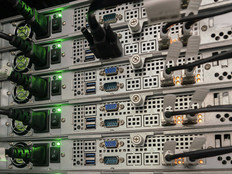NIST Investigates the Future of Blockchain in Government
NIST’s current work on collaborative blockchain research will inform how the agency moves forward with helping other government entities learn about and use blockchain and DLT technology.
Since January 2020, NIST has been working with the Treasury Department and the Defense Information Systems Agency on a proof of concept for a governmentwide blockchain application for grant tracking, according to the notice.
The previous research and development work has involved “internal exploration and testing” of Treasury Department systems, including” cryptographic function issue identification, and collaborative interagency relationships requiring mutual trust,” the notice states.
NIST notes that due to IT security concerns, the work needs to be “limited to as few researchers as possible.” NIST plans to continue investigating “requirements for running an interagency blockchain system and investigating the modifications necessary” for the ATO process related to blockchain-based systems, according to the notice.
NIST envisions working with a contractor to “investigate the technical and functional requirements to create a collaborative peer-to-peer interagency blockchain system.” The contractor will also help NIST “investigate source code of a proof of concept interagency blockchain application” and deploy a version of that on NIST systems, disconnected from external systems.
An optional task would involve discussing with NIST blockchain researchers and other interested government agencies guidelines and rules of governance for an interagency blockchain system, according to the notice. That would take into account factors such as adding and removing nodes, smart contract execution, system resource usage, modification of the blockchain structure, and other elements.
MORE FROM FEDTECH: What do you need to know about blockchain security in a federal setting?






.png)



